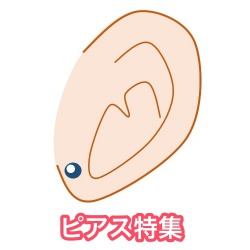The Essay Format – How to Write a Good Essay
One of the first forms of literature known to mankind was essays composed to convey ideas and express opinions. The writings were utilized in formal academic discussions, political agitation, company letters, pamphlets, and many other public communication forms. The essays were primarily used for self-expression, to comment on current events and scenarios, and narifuri backpack also to convey an opinion about matters of public concern. Some of the Most Well-known essays are The Origin of Species, Descartes’ Essay Concerning Human Understanding, Locke’s Essay Concerning Human Understanding, and composition writing for the internet.
A persuasive article, in contrast to a story essay, is a direct kind of literature, demonstrating its subject or topic in a way that persuades the reader to accept an idea or to adopt an action. A story essay typically deals with matters of private experience and may be written about a person or group of people. A persuasive article, on the other hand, tends to deal with public issues, thoughts, views, or feelings. It’s targeted at convincing the reader that an idea is better than a competing idea, a position is better than a contrary view, or that a remedy to a problem is far better than not having a solution in any way. Essays tend to be descriptive instead of prescriptive.
The four chief types of essays include persuasive essays, analytical essays, argumentative essays, and expository essays. These categories are derived from the arrangement of this literature, and the particular functions of each kind of essay. An persuasive essay normally starts with a case study and is intended to convince the reader to accept a notion to pass an exam, to purchase a product, or to deny a notion. Analytical essays, on the other hand, tend to present arguments and data in support of a most important thought.
An article’s structure usually follows a logical sequence, although not always. In some cases, but the structure of this essay may fluctuate, based on the fashion of the author. Casual essays typically follow a logical succession of thoughts and arguments. One thought functions as a springboard for yet another, creating an interconnected world of ideas and facts. When these experiments concern people issues, the reader will nearly always comprehend that the writer is making an opinion about the matter, even when he or she may disagree. Argumentative essays summarize a writer’s position on a certain issue and argue forcefully against views opposing the author’s viewpoints.
Finally, there are thesis statements. The thesis statement in an essay reflects the central idea of this essay. Essays that contain the thesis are most commonly assigned to prepare for university credit. The thesis is frequently written in one of two ways: as a straightforward statement of truth that the writer believes to be true; or instant, as a powerful piece of scholarship and reasoning that is directed at demonstrating a particular claim.
A narrative essay begins with an introduction and a debate. The argument is probably to appear in the first person, using personal experience to support the thesis. However, the article author might choose to use only third person pronouns, such as”I,””me,””my,” and”our.” Regardless of the order of presentation, the thesis statement in many essays makes a wide generalization or exception to an established rule, most frequently from the particulars of an event or occurrence. This technique is most effective when used to explain a specific case or characteristic of some type, instead of generalizing across the plank.
The title page and conclusion of the essay are almost always the last paragraph completely. In this section, the writer generally presents her or his primary argument against the opposing perspectives, using direct language to counter such viewpoints. The title page isn’t needed to be accommodated, but should include a couple of clearly recognizable features of these arguments presented throughout the body of their job. The most popular format for these pages is your compare and contrast process, comparing one set of events or facts to a different, typically presented in paragraph-by-paragraph or paragraph-by-phrase style. The purpose of this comparison is to draw the reader’s attention to a particular aspect of this scenario, and emphasize the debate or controversy over the actuality.
Conclusion statements typically follow the conclusion, as they serve to tie up loose ends of this article and make the whole thing seem more orderly and organized. These statements also serve to formally acknowledge the presence and role of the writer in addition to the specific facts or instances brought forth within the body paragraphs. The use of the formal end to complete essays is a common standard of writing, though some have chosen to end each essay using a personal opinion or personal observation. One needs to remember that the purpose of these statements would be to leave the reader with a solid impression of the essay and its intended message. If the author uses too many personal opinions or reveals a lack of comprehension of societal or cultural implications of these facts or illustrations presented inside the body paragraphs, the reader will have doubts about the objectivity of this item and may even doubt that the integrity of this author.
コメントを残す
Copyright (C) 2026 生活に役立つ記事 All Rights Reserved.














